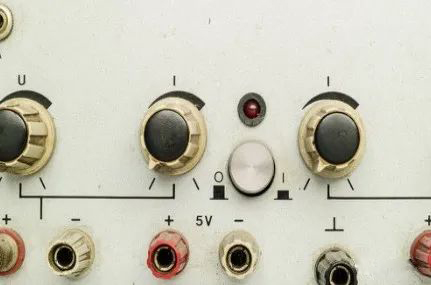Negative temperature coefficient (NTC) thermistors are used as high precision temperature sensor components in a variety of automotive, industrial, household appliance and medical applications. Because a wide variety of NTC thermistors are available — created with different designs and made from a variety of materials — choosing the best NTC thermistors for a particular application can be challenging.
Why choose NTC?
There are three main temperature sensor technologies, each with its own characteristics: resistance temperature detector (RTD) sensors and two types of thermistors, positive and negative temperature coefficient thermistors. RTD sensors are primarily used to measure a wide range of temperatures, and because they use pure metal, they tend to be more expensive than thermistors.
Therefore, because thermistors measure temperature with the same or better accuracy, they are usually preferred over RTDS. As the name implies, the resistance of a positive temperature coefficient (PTC) thermistor increases with temperature. They are commonly used as temperature limit sensors in switch-off or safety circuits because resistance rises once the switching temperature is reached. On the other hand, as the temperature increases, the resistance of the negative temperature coefficient (NTC) thermistor decreases. The resistance to temperature (RT) relationship is a flat curve, so it is very accurate and stable for temperature measurements.
Key selection criteria
NTC thermistors are highly sensitive and can measure temperature with high accuracy (±0.1°C), making them ideal for a wide range of applications. However, the choice of which type to specify depends on a number of criteria – temperature range, resistance range, measurement accuracy, environment, response time, and size requirements.
Epoxy coated NTC elements are robust and typically measure temperatures between -55°C and + 155°C, while glass-encased NTC elements measure up to + 300°C. For applications requiring extremely fast response times, glass-enclosed components are a more appropriate choice. They are also more compact, with diameters as small as 0.8mm.
It is important to match the temperature of the NTC thermistor to the temperature of the component causing the temperature change. As a result, they are not only available in the traditional form with leads, but can also be mounted in a screw type housing to attach to the radiator for surface mounting.
New to the market are completely lead-free (chip and component) NTC thermistors that meet the more stringent requirements of the forthcoming RoSH2 directive.
Application Example Overview
NTC sensor components and systems are implemented in a wide range of fields, especially in the automotive sector. Typical applications include heated steering wheels and seats, and sophisticated climate control systems. Thermistors are used in exhaust gas recirculation (EGR) systems, intake manifold (AIM) sensors, and temperature and manifold absolute pressure (TMAP) sensors. Their wide operating temperature range has high impact resistance and vibration strength, high reliability, and long life with long-term stability. If thermistors are to be used in automotive applications, then the stress resistance AEC-Q200 global standard here is mandatory.
In electric and hybrid vehicles, NTC sensors are used for battery safety, monitoring electrical pulse windings and charging status. The refrigerant cooling system that cools the battery is connected to the air conditioning system.
Temperature sensing and control in household appliances covers a wide range of temperatures. For example, in a clothes dryer, a temperature sensor determines the temperature of hot air that flows into the drum and the temperature of air that flows out as it exits the drum. For cooling and freezing, the NTC sensor measures the temperature in the cooling chamber, prevents the evaporator from freezing, and detects the ambient temperature. In small appliances such as irons, coffee makers and kettles, temperature sensors are used for safety and energy efficiency. Heating, ventilation and air conditioning (HVAC) units occupy a larger market segment.
The Growing Medical Field
The medical electronics field has a variety of devices for inpatient, outpatient and even home care. NTC thermistors are used as temperature sensing components in medical devices.
When a small mobile medical device is being charged, the operating temperature of the rechargeable battery must be constantly monitored. This is because the electrochemical reactions used during monitoring are largely temperature-dependent, so fast, accurate analysis is essential.
Continuous Glucose Monitoring (GCM) patches can monitor blood sugar levels in patients with diabetes. Here, the NTC sensor is used to measure temperature, as this can affect the results.
Continuous Positive airway pressure (CPAP) treatment uses a machine to help people with sleep apnea breathe more easily during sleep. Similarly, for severe respiratory illnesses, such as COVID-19, mechanical ventilators take over the patient’s breathing by gently pressing air into their lungs and removing carbon dioxide. In both cases, glass-enclosed NTC sensors are integrated into the humidifier, airway catheter and intake mouth to measure air temperature to ensure that patients remain comfortable.
The recent pandemic has driven the need for greater sensitivity and accuracy for NTC sensors with long-term stability. The new virus tester has strict temperature control requirements to ensure consistent reaction between sample and reagent. The smartwatch is also integrated with a temperature monitoring system to warn of potential illnesses.
Post time: May-25-2023

